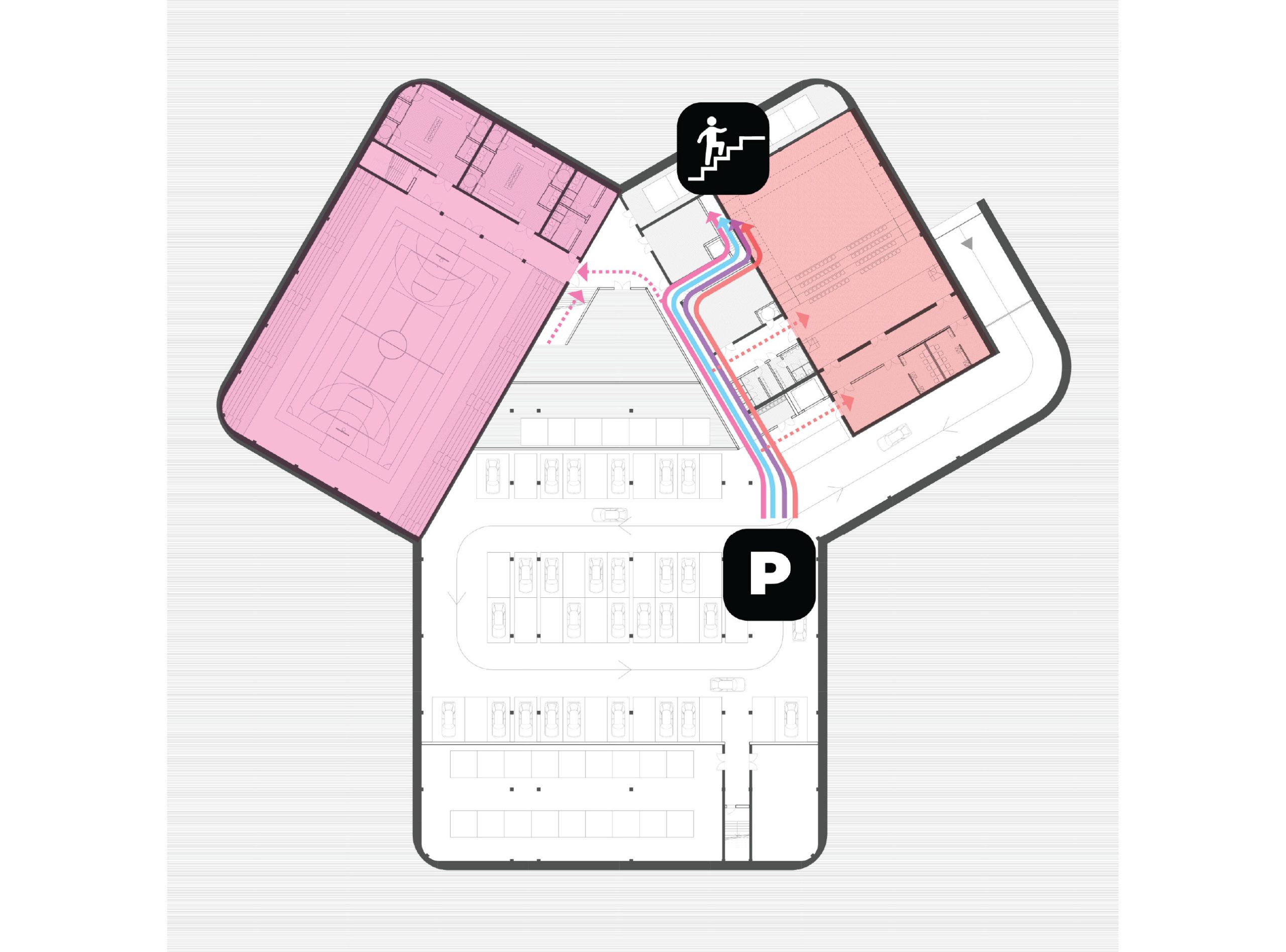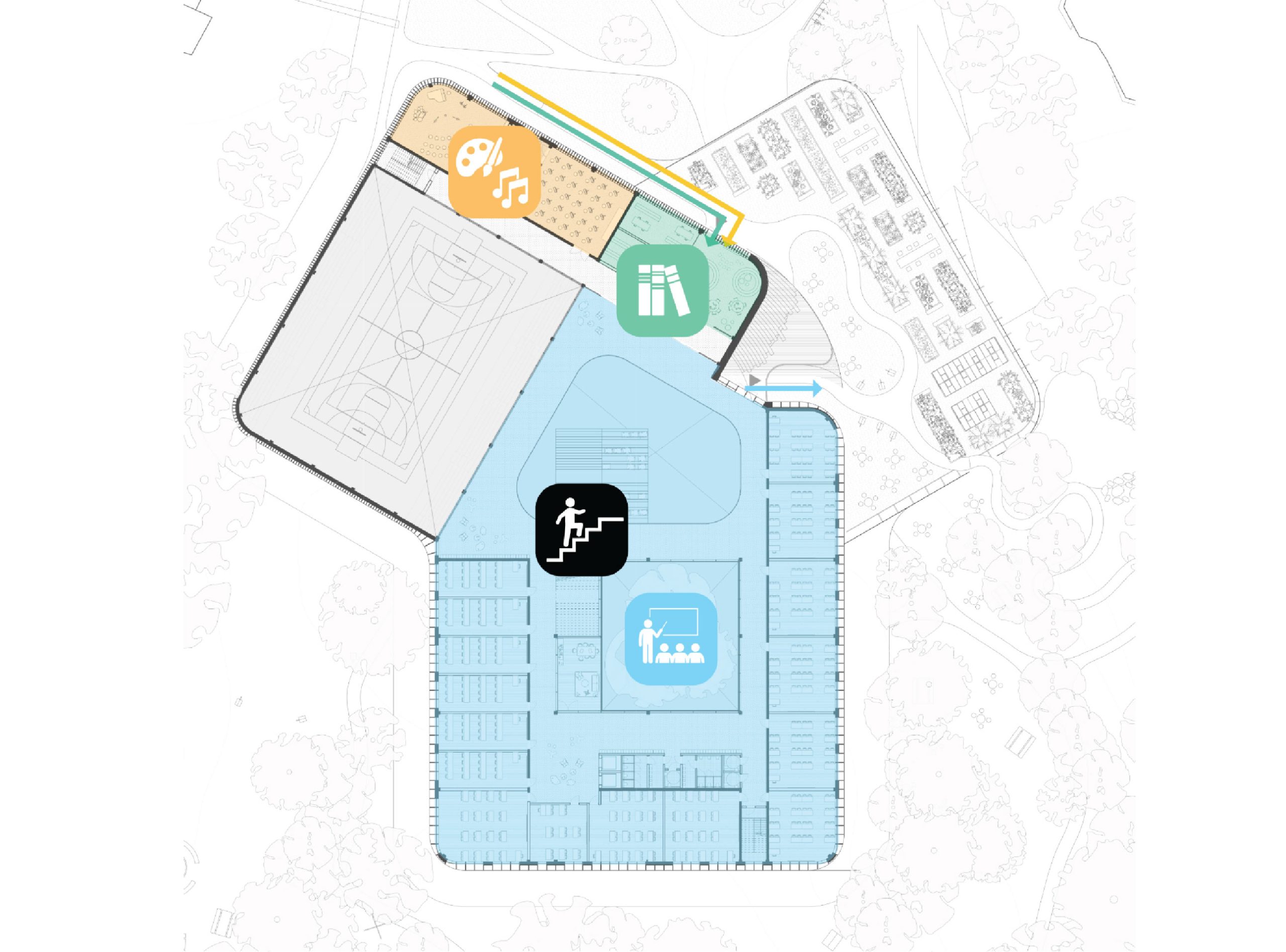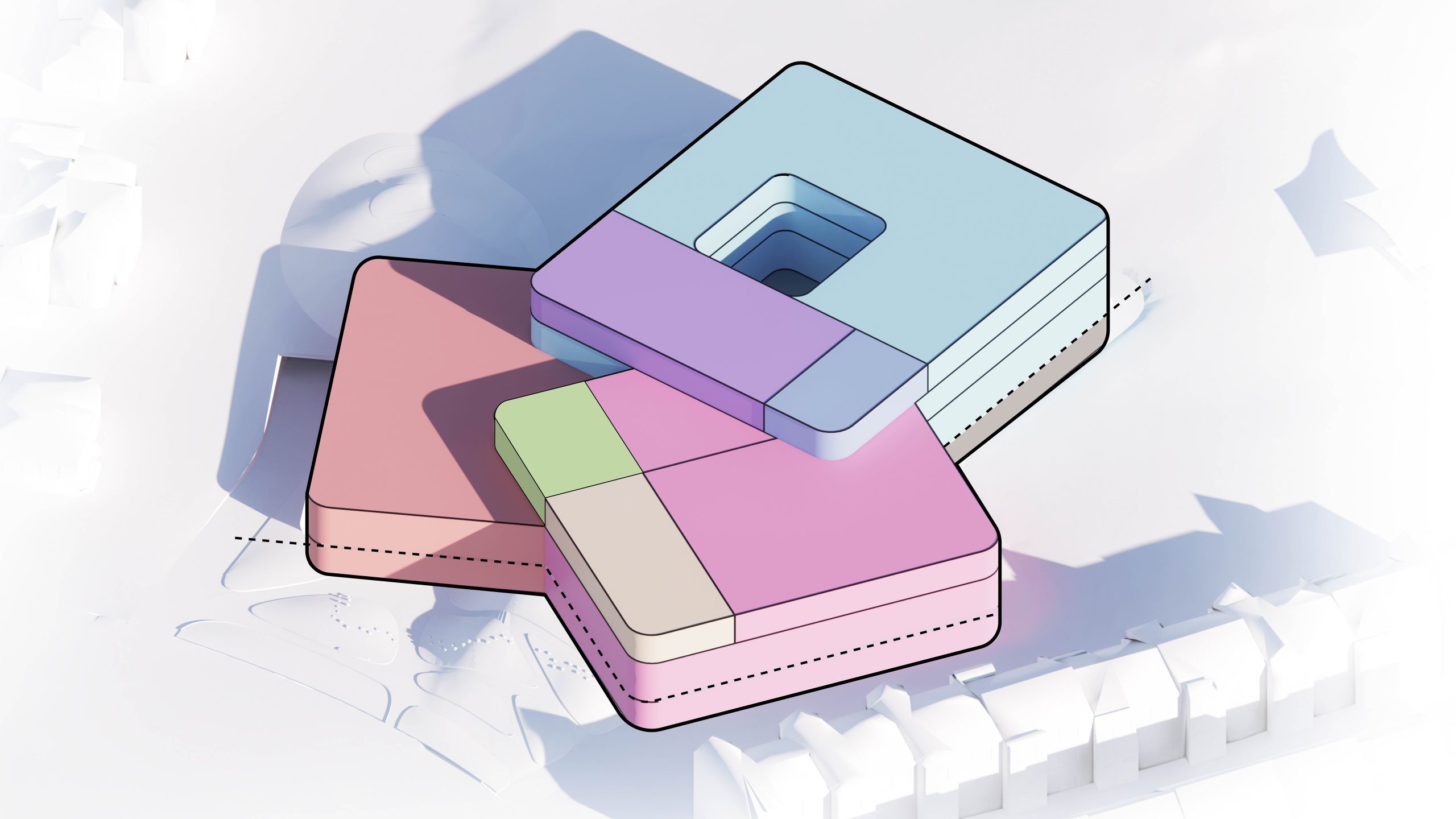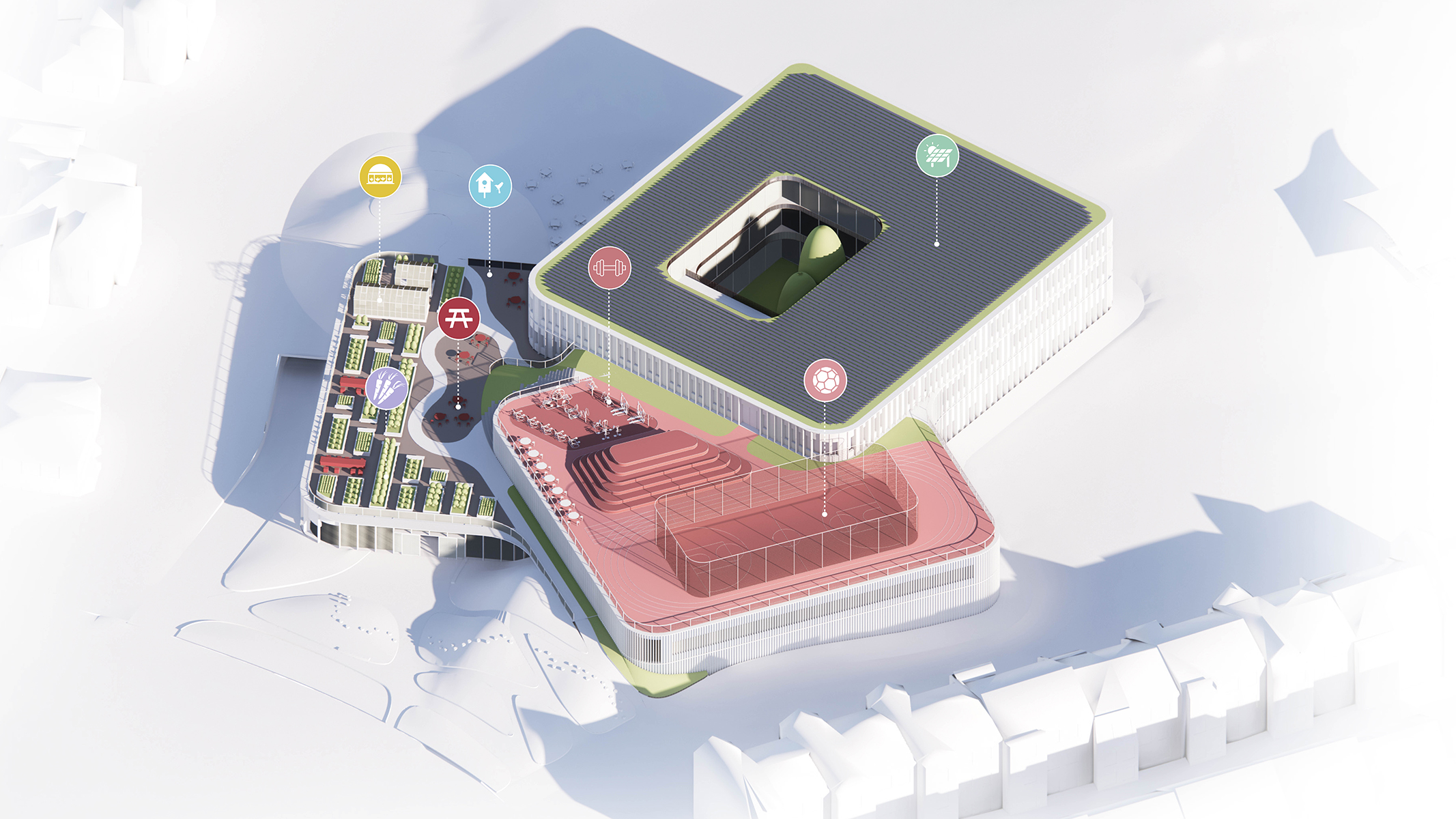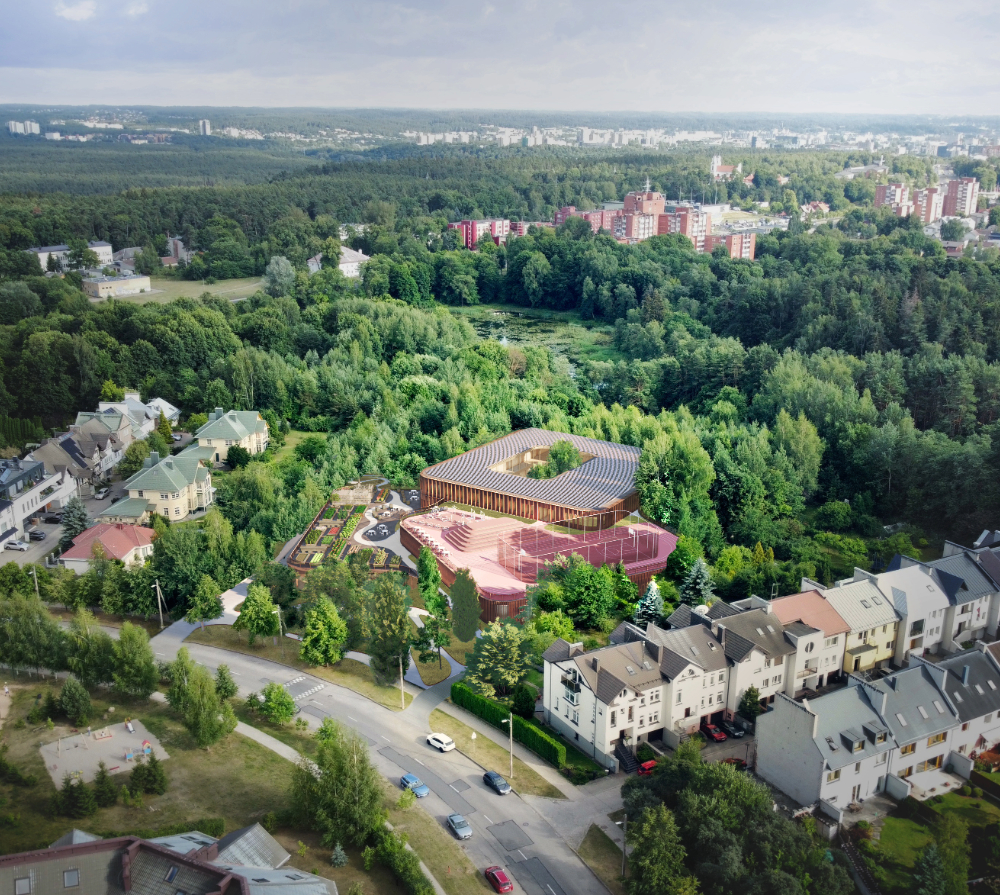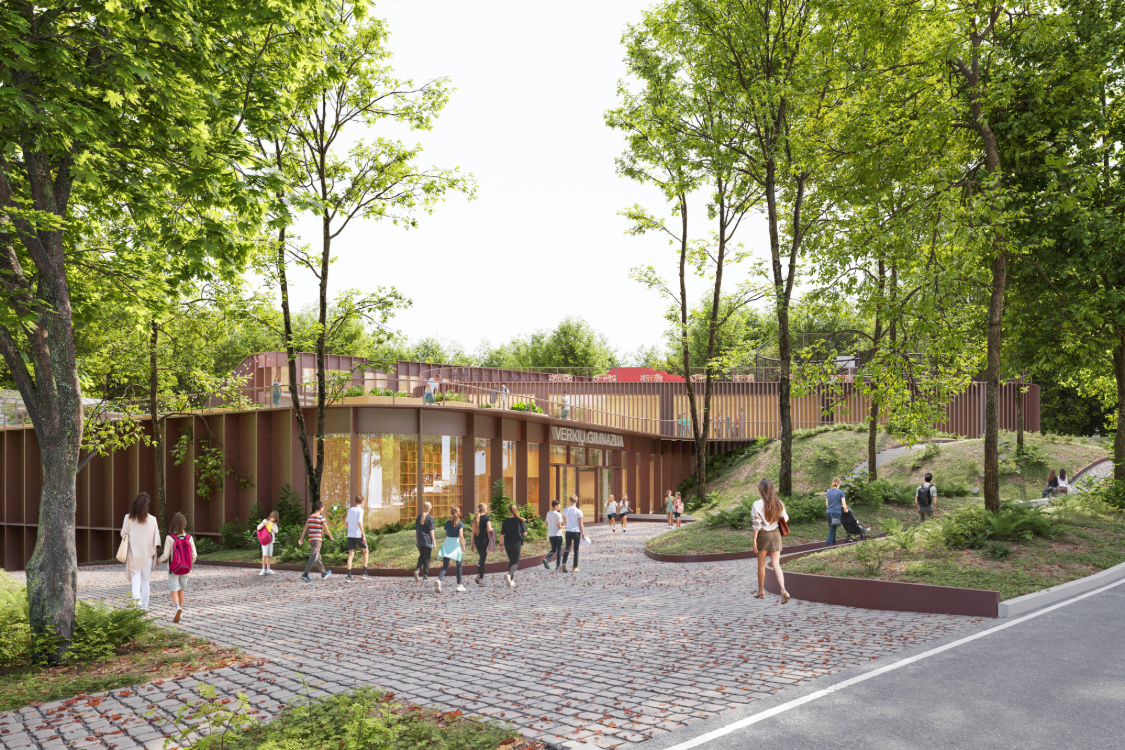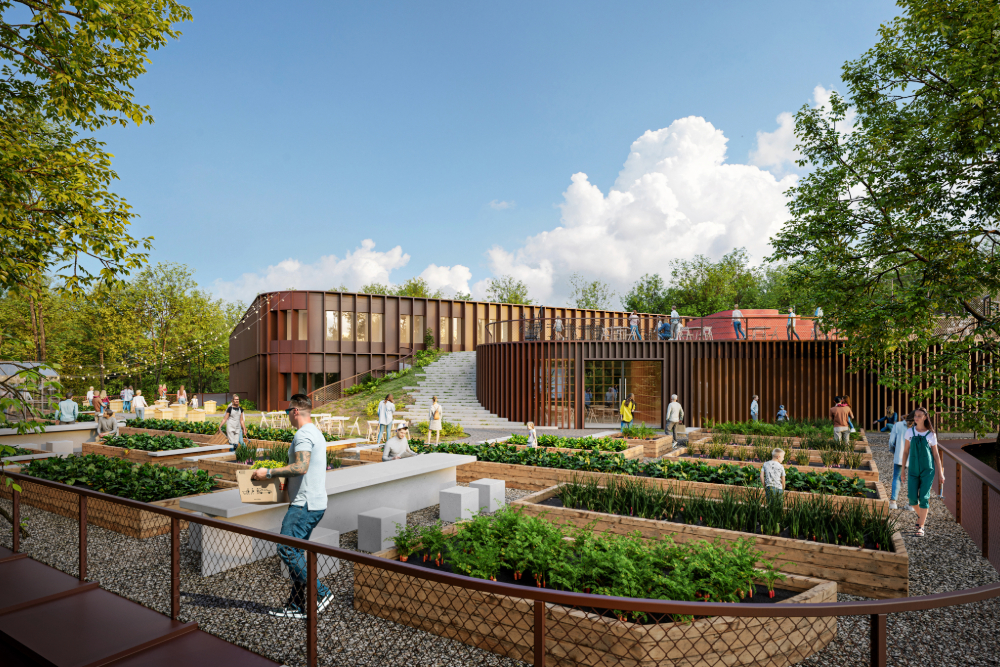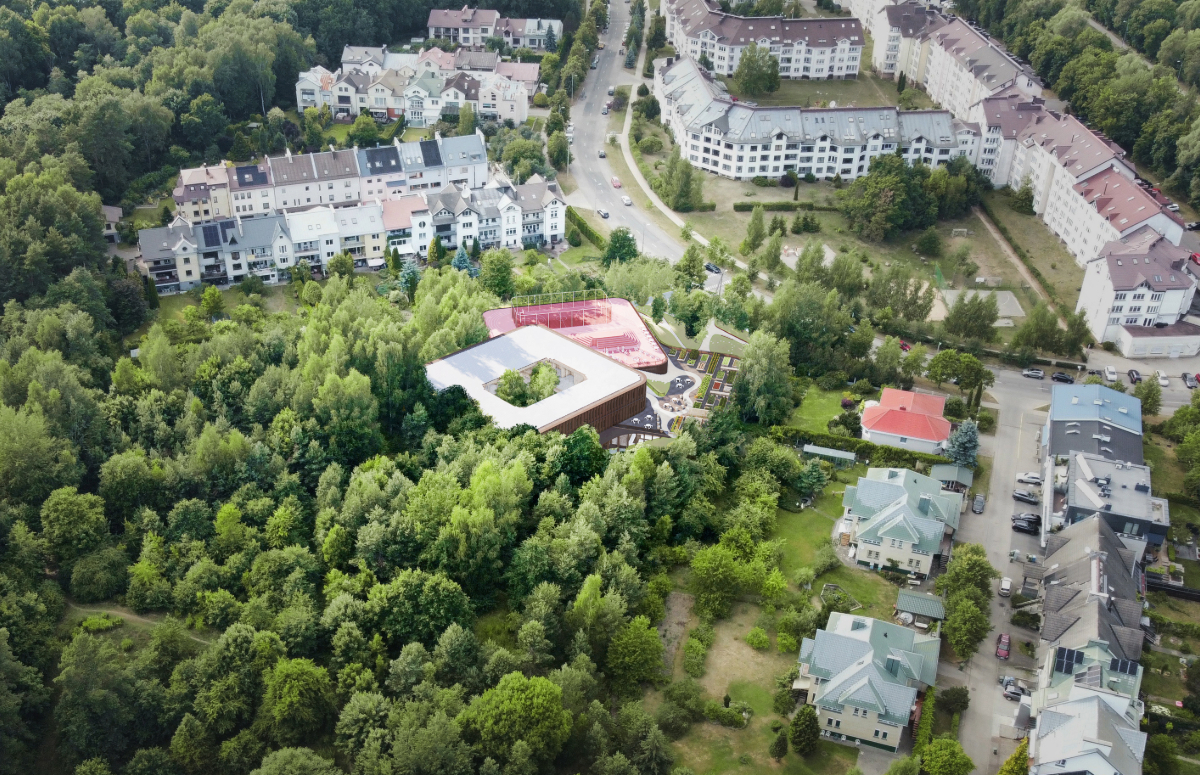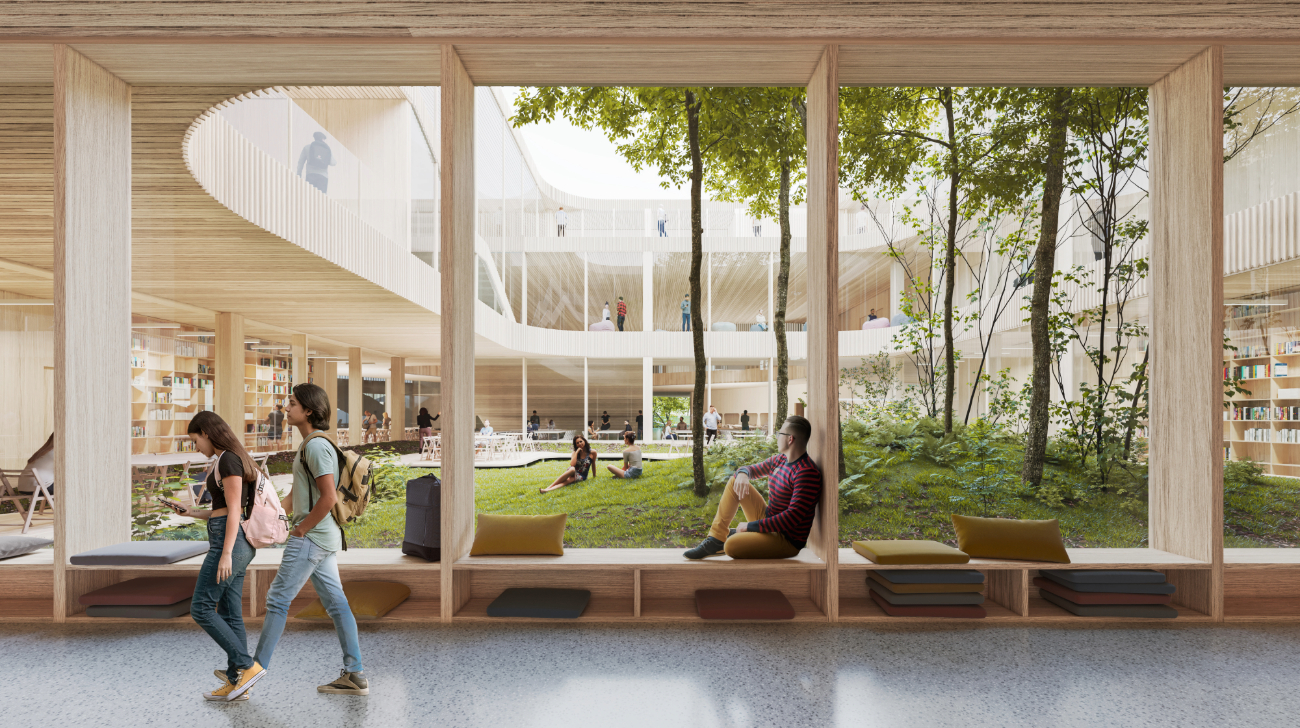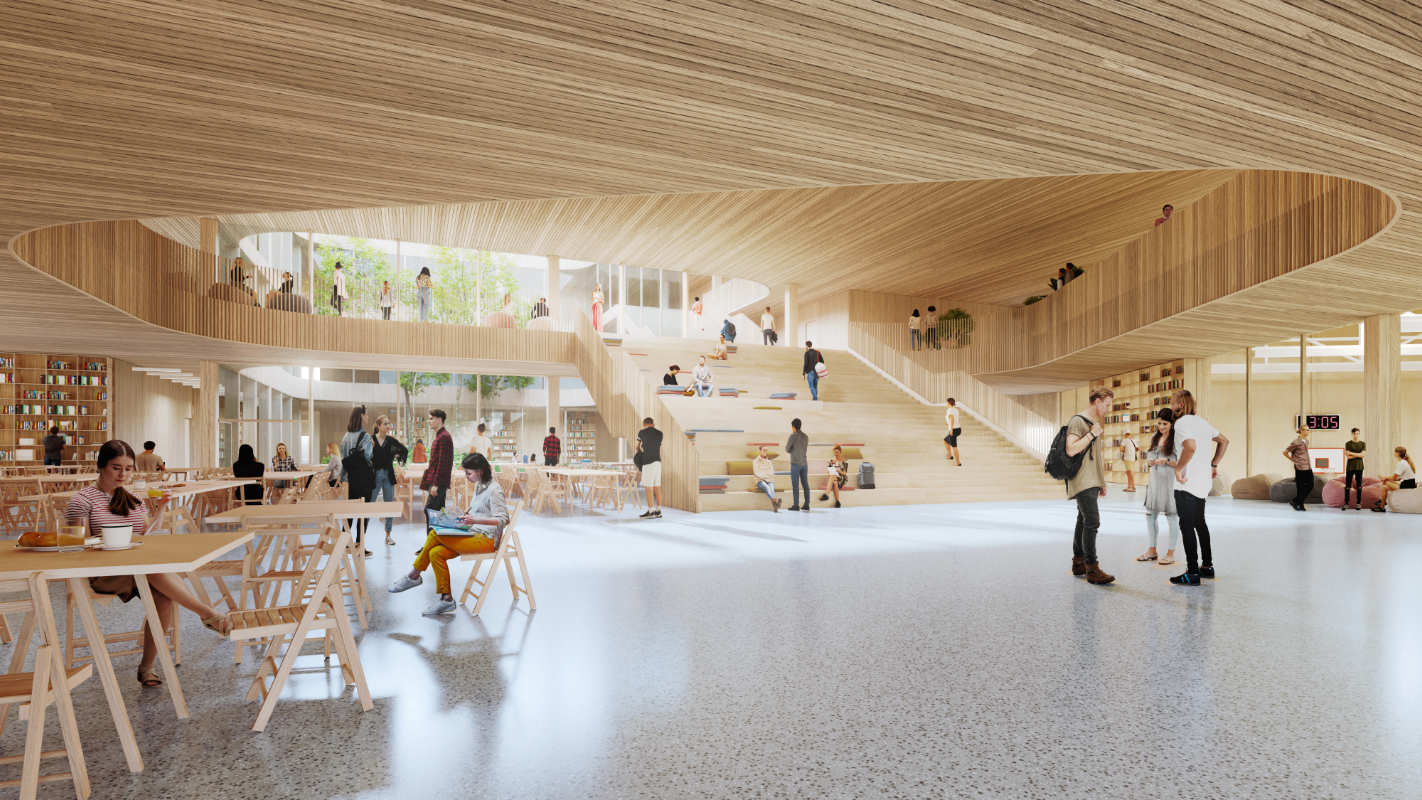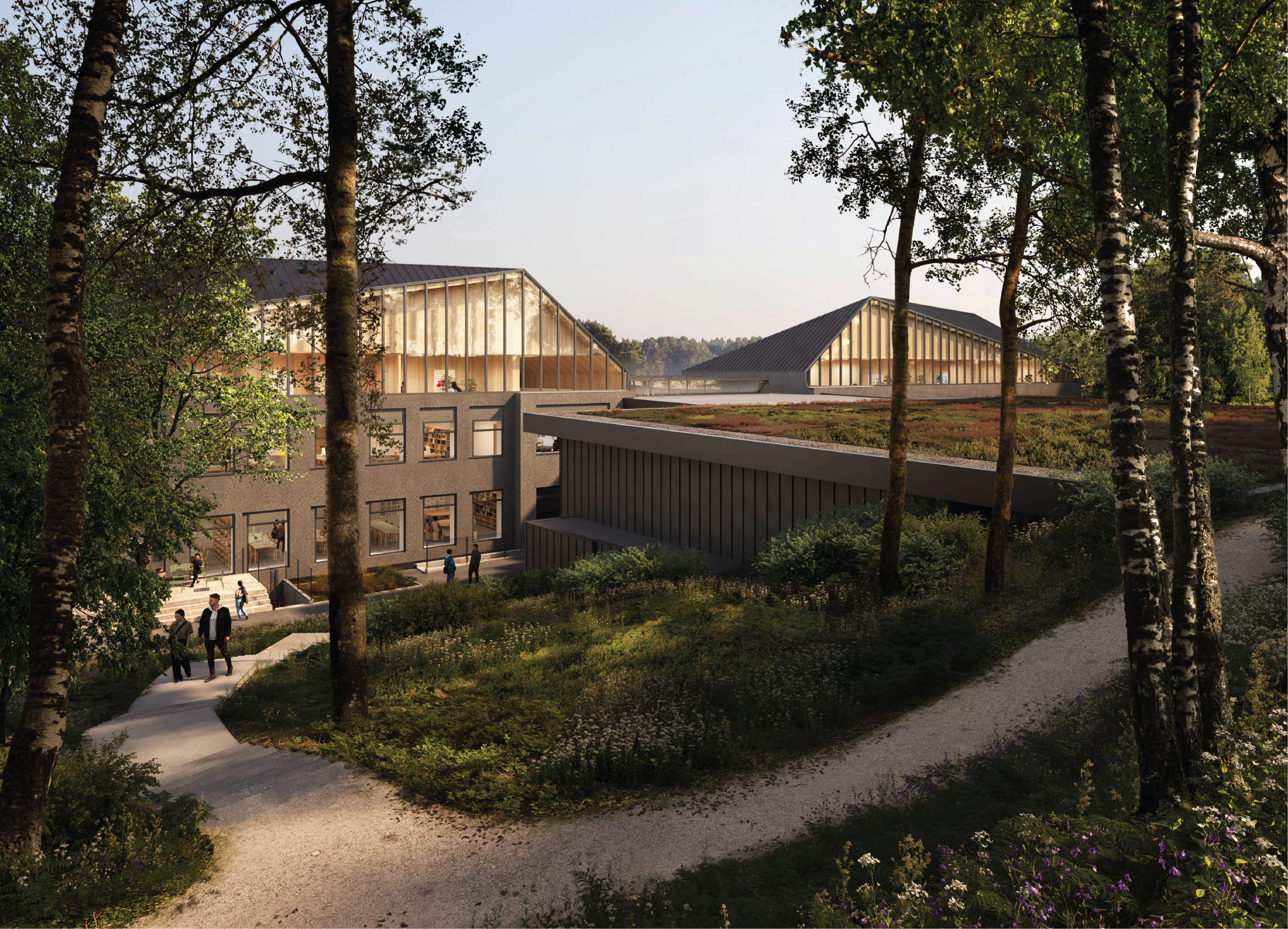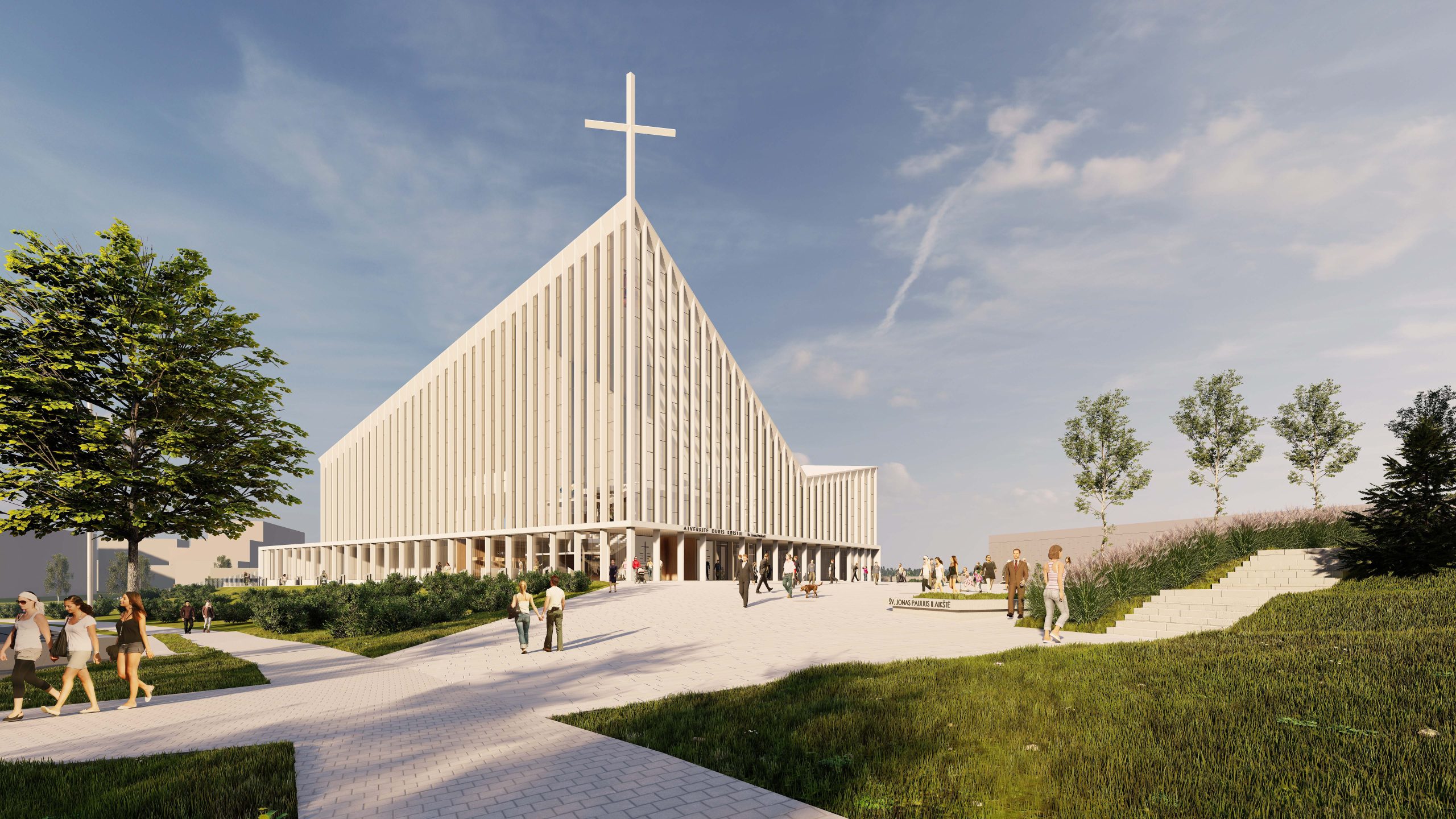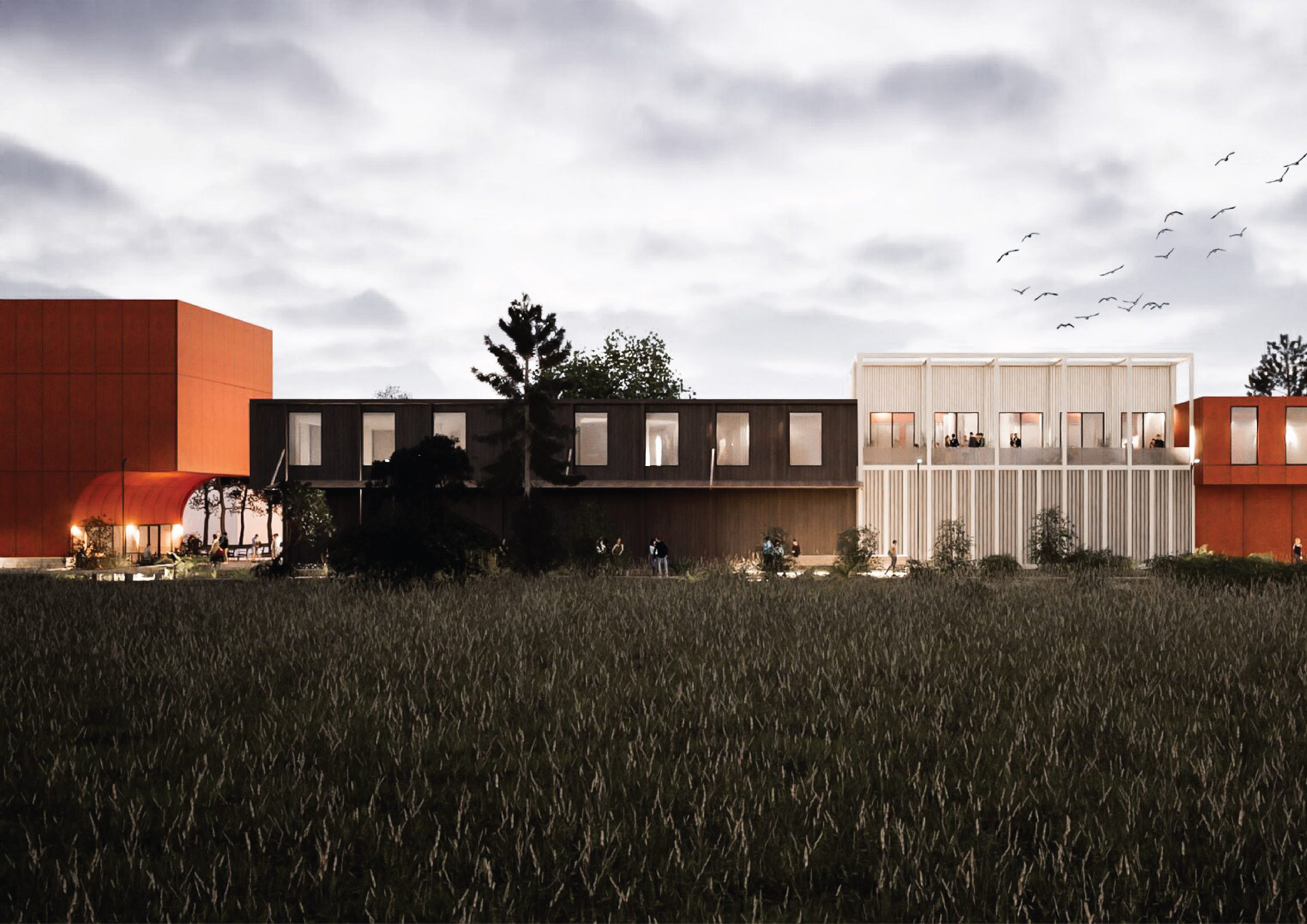Forest Nexus – School in Vilnius
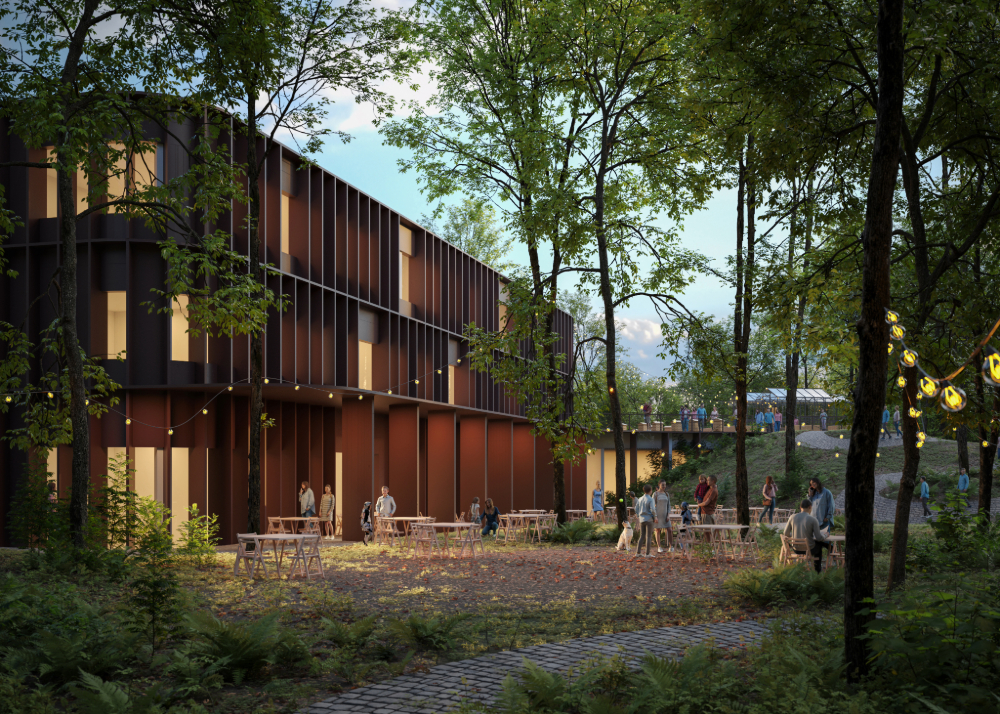
- Location Vilnius, Lithuania
- Type Educational
- Size 11 433 m²
- Year 2023
- Status Proposal
- Client Vilniaus vystymo kompanija
- Images Noisy Owls, Entropic
- Project lead Elena Paleckytė, Paulius Latakas
- Authors Project management - Gabrielė Rinkevičiūtė, Elena Paleckytė. Project architects - Entropic: Magdalena Mróz, Geoffrey Eberle, Maria Antonia Franco. Landscape architects - Gytis Lietvaitis, Eglė Vainoriūtė
Nestled within a serene Vilnius forest, our design for a new high school, a collaboration with our Spanish partners Entropic, prioritizes both education and community. Recognizing the increasing social fragmentation of modern society, we envisioned the school not as an isolated institution, but as a vital neighborhood hub fostering connection and the exchange of cultural wisdom. Our design embraces the concept of interconnectedness, drawing inspiration from the Venn diagram to create an architectural layout where overlapping functions become vibrant 'free spaces' at the heart of the building, encouraging interaction and maximizing the utilization of facilities day and night.
Mindful of its precious natural setting, our design strategically compacts the building near Marcinkevičiaus street, minimizing impact on the surrounding forest and preserving mature trees. Aligning the three distinct program areas with the radial streetscape, the interconnected volumes create a central social space that promotes community, offers clear orientation, and allows for flexible security arrangements. Extending pathways from the lake and forest over the building's accessible roof further enhances user experience and integrates the project with its environment. This rooftop space becomes an active public frontage, offering exciting outdoor functions without sprawling across the landscape.
Our approach favors minimal intervention, celebrating the forest's natural beauty and ecological balance. Inside, the design supports a contemporary educational paradigm with dynamic learning spaces extending beyond traditional classrooms into corridors, balconies, and the rooftop. The use of wood finishes enhances acoustics and hygiene, while terrazzo flooring provides thermal mass for energy efficiency. Universal design principles ensure inclusive circulation and diverse study environments for all abilities. The structural design allows for flexible classroom configurations and future expansion, ensuring the school remains a dynamic and adaptable asset to the community.
-
Second prize in the architectural competition
Urban approach

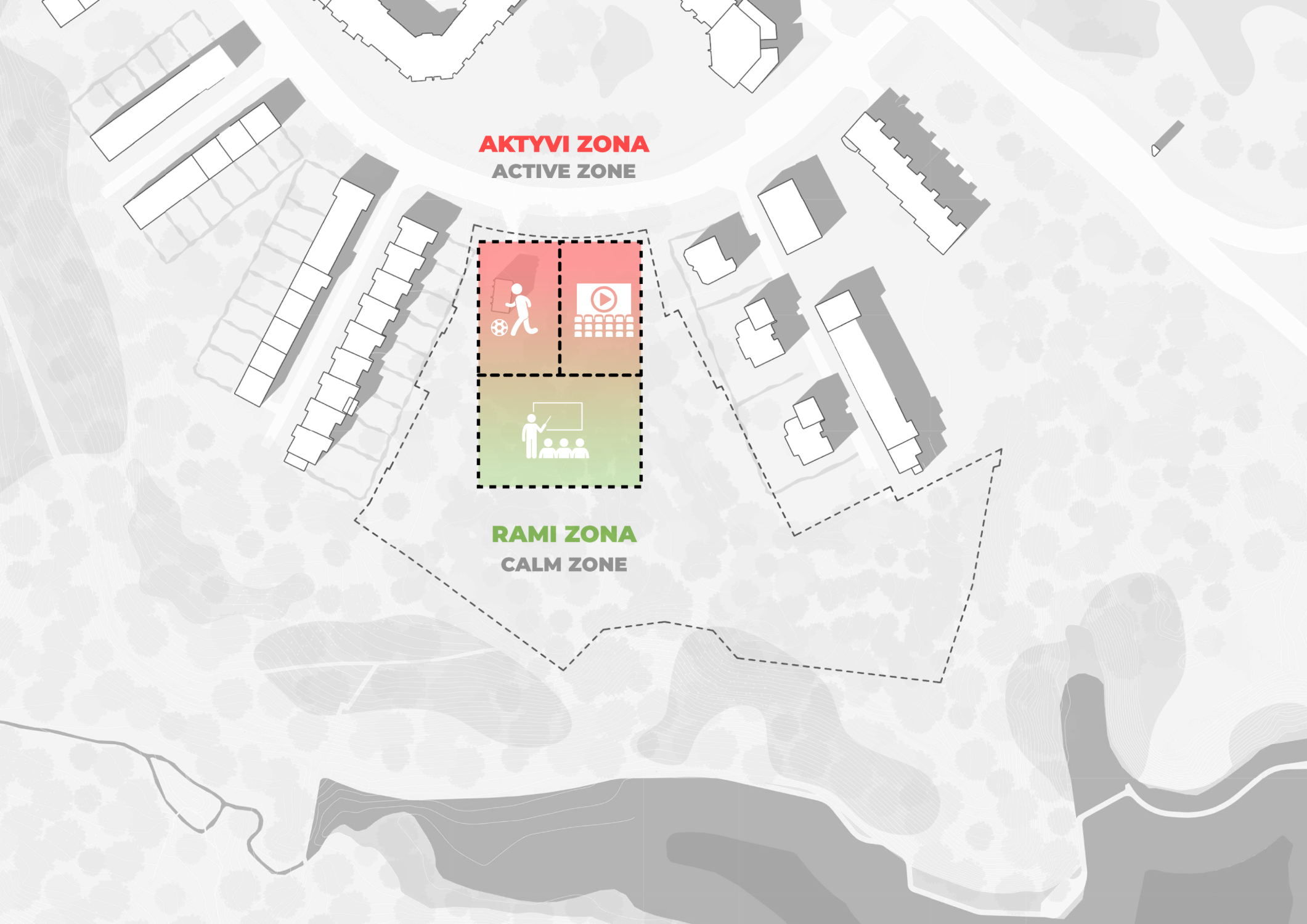
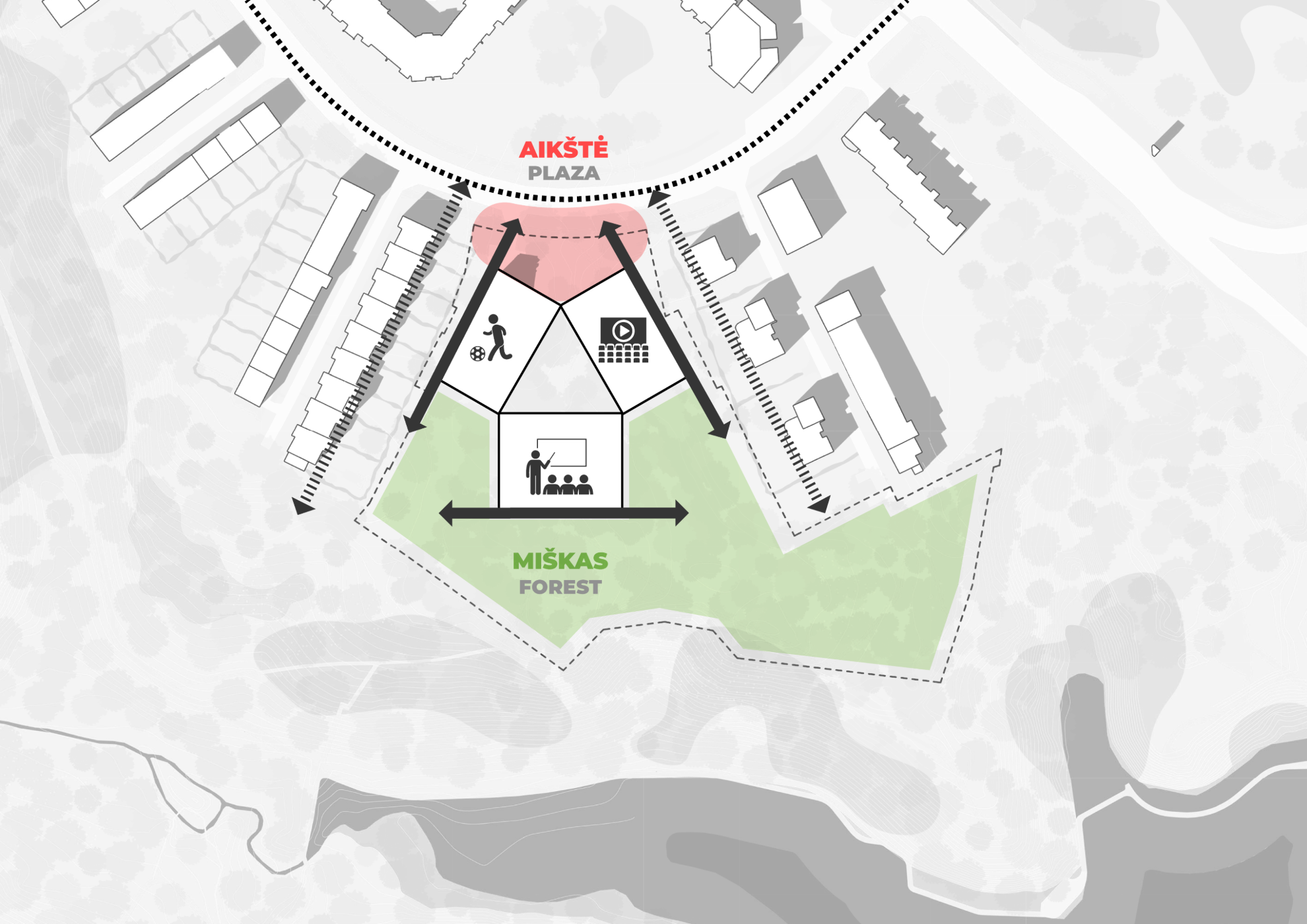

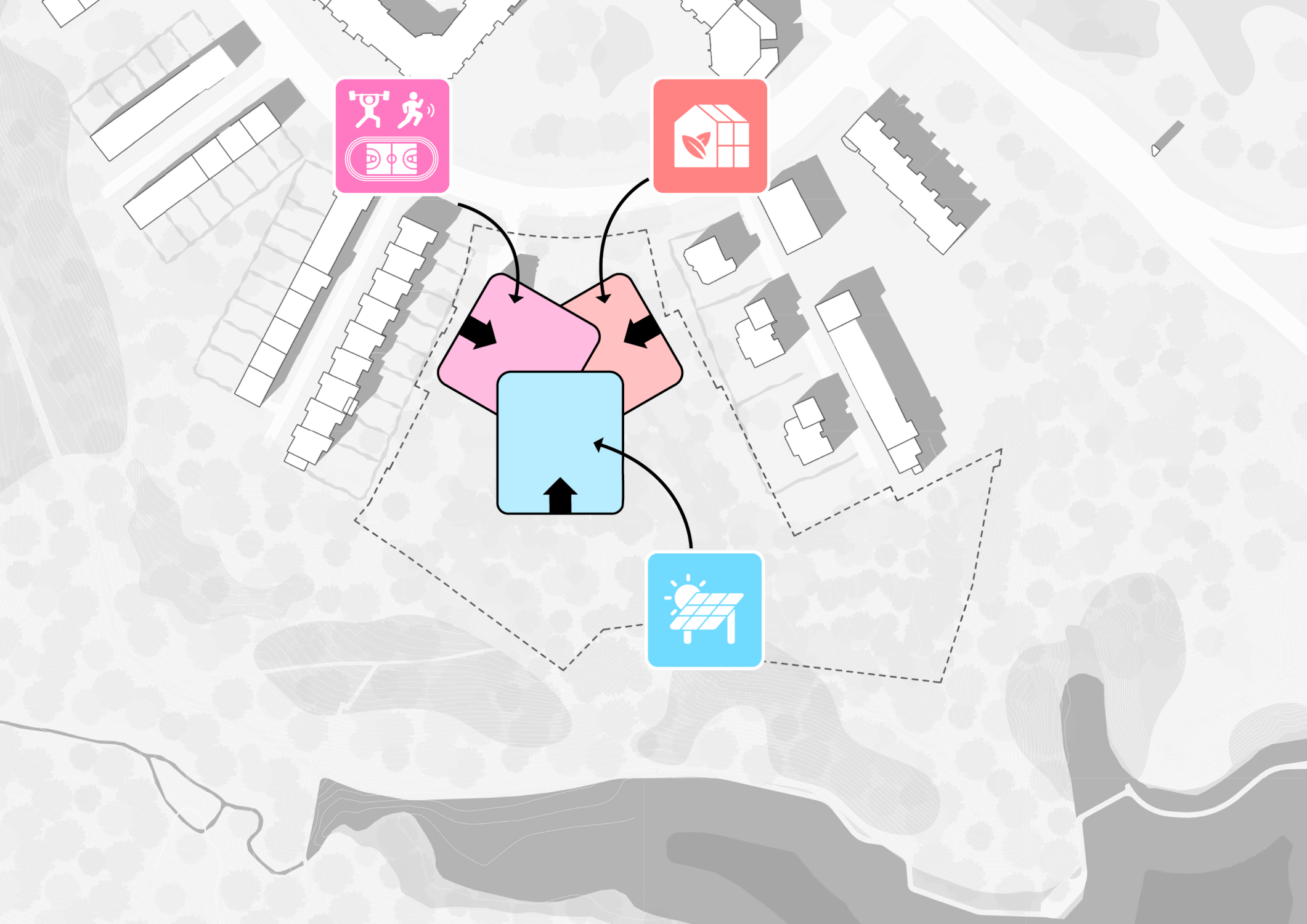
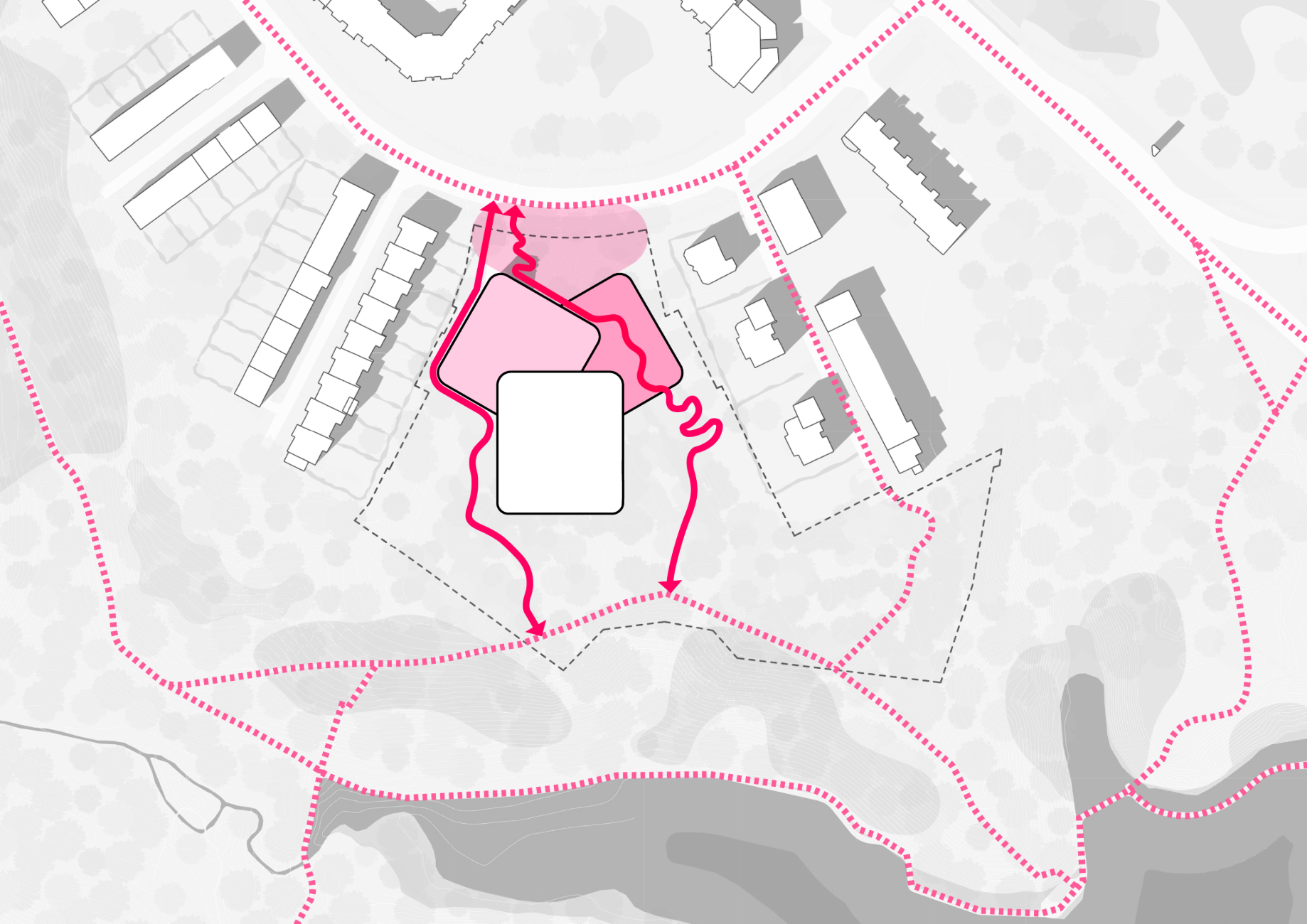
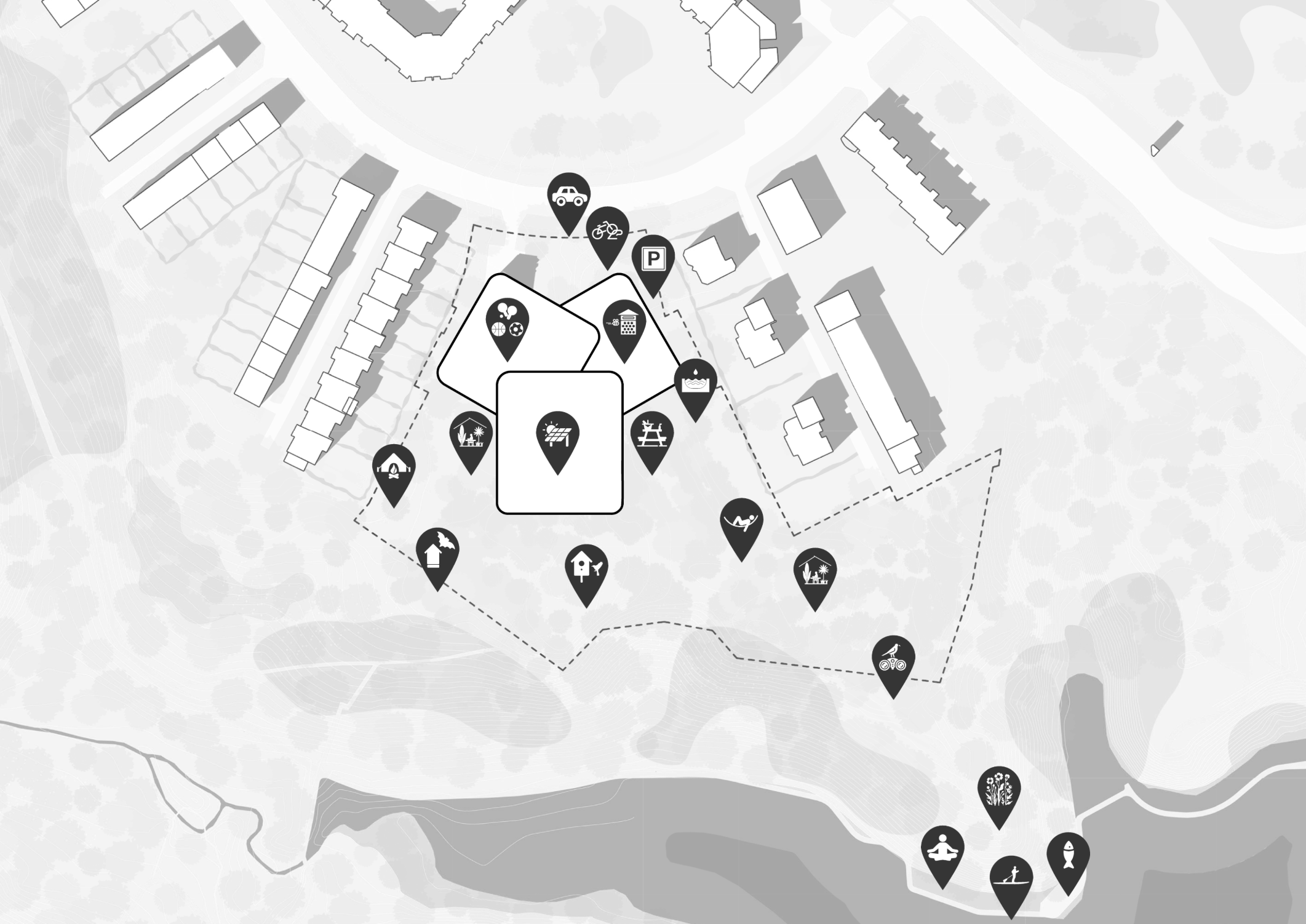

School as a community center
